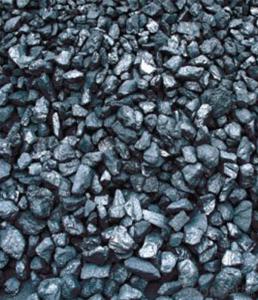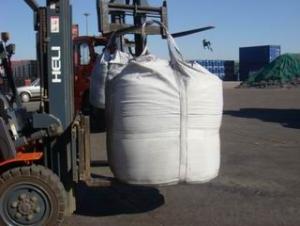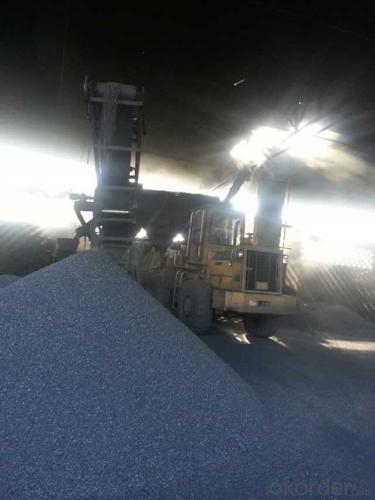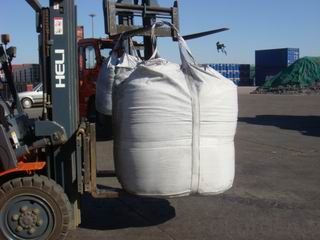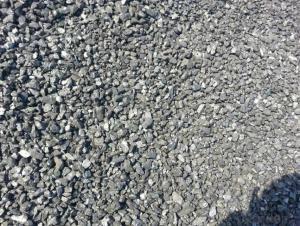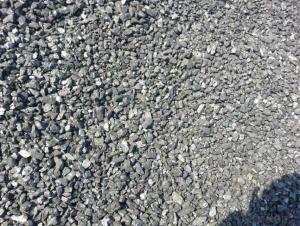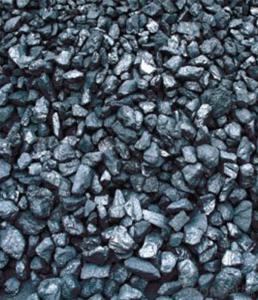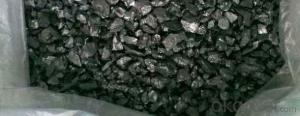FC 92% GAS Calcined Anthracite
- Loading Port:
- China Main Port
- Payment Terms:
- TT OR LC
- Min Order Qty:
- -
- Supply Capability:
- -
OKorder Service Pledge
OKorder Financial Service
You Might Also Like
Specifications
Calcined Anthracite
Fixed carbon: 90%-95%
S: 0.5% max
Size: 0-3. 3-5.3-15 or as request
Calcined Anthracite is produced using the best Anthracite-Taixi Anthracite with low S and P, It is widely used in steel making and casting, Chemical and some other fields.
General Specification of Calcined Anthracite:
PARAMETER UNIT GUARANTEE VALUE | |||||
F.C.% | 95MIN | 94MIN | 93MIN | 92MIN | 90MIN |
ASH % | 4MAX | 5MAX | 6MAX | 7MAX | 8MAX |
V.M.% | 1 MAX | 1MAX | 1.5MAX | 1.5MAX | 1.5MAX |
SULFUR % | 0.5MAX | 0.5MAX | 0.5MAX | 0.5MAX | 0.5MAX |
MOISTURE % | 0.5MAX | 0.5MAX | 0.5MAX | 0.5MAX | 0.5MAX |
Size can be adjusted based on buyer's request.
Pictures of Calcined Anthracite:
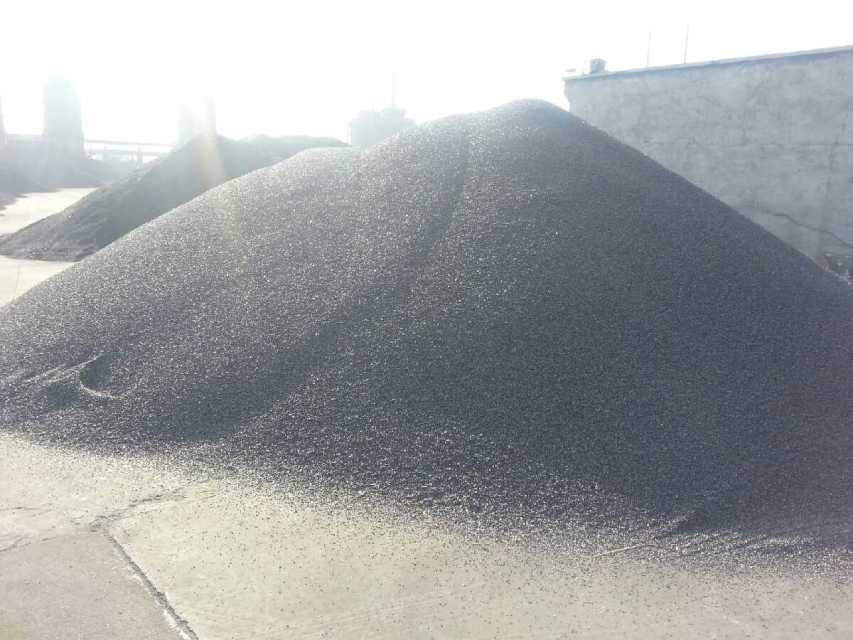



We can supply below furnace charges, please feel free to contact us if you areinterested in any of any of them:
Coke (Metallurgical, foundry, gas)
Calcined Anthracite with fixed carbon from 90% to 95%
- Q: How does a kebab cook at home?
- The string label used (as with oil, burning flammable), placed below, then take a layer without burning the child, put carbon. The main thing is to make a gap between the fire and carbon. Then from the stove below the fan, let the fire go.
- Q: Is carbon a metal or non-metal?
- Carbon is a non-metal. It is located in group 14 of the periodic table, also known as the carbon group. Non-metals generally have properties opposite to those of metals, such as being poor conductors of heat and electricity, having low melting and boiling points, and being brittle. Carbon, specifically, is known for its ability to form a variety of allotropes, including graphite and diamond. These allotropes have different physical and chemical properties, but they all share the characteristic of being non-metals.
- Q: How are carbon compounds classified?
- Carbon compounds are classified based on their structural arrangement, functional groups, and the type of bonds they form with other elements.
- Q: How do you remove car carbon?
- 3, running high speed can flush carbon deposition? Running high speed, you can really use the airflow on the airway erosion, wash away part of the carbon deposition. So, if you happen to go out, there are high-speed, national road two choices, you may choose to pull back to speed. But, Ma director thinks, if be in order to "flush carbon deposit" specially, want to run high speed, do not have this necessity. "It is a waste of time, and the cost of oil, extra high speed tolls, the effect is better to do a maintenance 4S shop!" 4, improve the shift speed, such as the original speed 2000rpm shift, modified 2500rpm conversion, generated can prevent carbon deposition, but also to protect the engine? Ma director said, low speed the shift, is often said that the "drag block", the car is easy to knock, the combustion of gasoline is not sufficient to carbon deposition. But it's not necessary for people to increase gear speed - that will increase fuel consumption and cause premature wear of clutch friction plates. So, manual transmission of the car, 1.6 ~ 2.0L displacement, about 2000 rpm shift is more economical, and no need to improve; and automatic car, pay attention not to slam the gas.
- Q: How does carbon affect the formation of smog?
- Carbon plays a significant role in the formation of smog, particularly in the form of carbon monoxide (CO) and volatile organic compounds (VOCs). When fossil fuels are burned, such as in vehicles, power plants, or industrial processes, carbon is released into the atmosphere in the form of CO and VOCs. These carbon emissions, especially in areas with high population density, can contribute to the formation of smog. Smog is a mixture of air pollutants, primarily ground-level ozone, which is formed when nitrogen oxides (NOx) and VOCs react in the presence of sunlight. Carbon monoxide is a precursor to the formation of ground-level ozone. It reacts with nitrogen oxides and sunlight to form ozone, a major component of smog. VOCs, on the other hand, react with nitrogen oxides in the presence of sunlight to form additional ground-level ozone. Additionally, carbon particles, also known as black carbon or soot, can contribute to the formation of smog. These particles absorb sunlight and heat the surrounding air, leading to temperature inversions. Temperature inversions trap pollutants close to the ground, preventing them from dispersing and exacerbating smog formation. Reducing carbon emissions is crucial in controlling and preventing smog formation. Implementing cleaner technologies, such as catalytic converters in vehicles and using cleaner fuels, can help decrease the release of carbon monoxide and VOCs. Furthermore, promoting renewable energy sources and reducing reliance on fossil fuels can significantly reduce carbon emissions, thus mitigating the formation of smog.
- Q: How does carbon impact food production?
- There are several ways in which carbon affects food production. To begin with, carbon dioxide (CO2) is a significant greenhouse gas that plays a role in climate change. The presence of higher levels of CO2 in the atmosphere leads to increased temperatures, changes in rainfall patterns, and more frequent extreme weather events. All of these factors can have a negative impact on crop growth and productivity. For instance, excessive heat can result in lower crop yields and reduced quality, while intense rainfall or droughts can cause flooding or water scarcity, both of which can harm crops and decrease agricultural productivity. Moreover, carbon emissions originating from agricultural practices, such as the utilization of synthetic fertilizers, deforestation for agriculture, and livestock production, contribute to the overall carbon footprint of the food system. These emissions worsen climate change, establishing a vicious cycle in which climate change has an adverse effect on food production, while food production, in turn, contributes to climate change. Furthermore, the production of food is also influenced by carbon emissions from its transportation and processing. The transportation of food over long distances, which often involves the use of fossil fuels, leads to carbon emissions. Similarly, the processing and packaging of food require energy, often derived from fossil fuels, which further adds to carbon emissions. To alleviate the carbon impact on food production, it is necessary to adopt sustainable agricultural practices. This includes techniques like agroforestry, organic farming, and precision agriculture, which can help store carbon in soils, reduce dependency on synthetic fertilizers, and enhance overall soil health. Additionally, reducing food waste and promoting the consumption of local and seasonal food can decrease carbon emissions associated with transportation and processing. In conclusion, carbon affects food production through its contribution to climate change and the resulting extreme weather events, as well as through emissions generated from agricultural practices and food processing. Addressing these impacts is crucial for ensuring food security and sustainability in the face of climate change.
- Q: What are the alternatives to fossil fuels for energy production?
- There are several alternatives to fossil fuels for energy production, each with its own unique advantages and challenges. These alternatives include: 1. Renewable Energy Sources: Renewable energy sources, such as solar, wind, hydroelectric, and geothermal energy, harness the power of natural resources that are constantly replenished. Solar energy utilizes the sun's rays to generate electricity through photovoltaic cells, while wind energy converts the kinetic energy of wind into electrical power. Hydroelectric energy is generated by the force of flowing water, typically from dams or rivers, and geothermal energy taps into the heat generated by the Earth's core. These sources offer clean and virtually limitless energy, reduce greenhouse gas emissions, and promote energy independence. However, they may require a significant initial investment and have limitations based on geographic location and weather conditions. 2. Nuclear Energy: Nuclear power plants generate electricity through nuclear fission, which involves splitting atoms of uranium or plutonium to release energy. Nuclear energy is highly efficient and produces no greenhouse gas emissions during operation. It has the potential to provide consistent baseload power and can significantly reduce dependence on fossil fuels. However, it raises concerns about the storage and disposal of nuclear waste, the risk of accidents, and the potential for nuclear weapons proliferation. 3. Bioenergy: Bioenergy involves utilizing organic materials, such as agricultural waste, wood pellets, or dedicated energy crops, to produce heat, electricity, or biofuels. Biomass can be burned directly or converted into a gaseous or liquid form, such as biogas or bioethanol, to replace fossil fuels. Bioenergy has the advantage of being a readily available and carbon-neutral energy source. However, it may compete with food production, require large amounts of land, and raise concerns about deforestation and biodiversity loss if not managed sustainably. 4. Tidal and Wave Energy: Tidal and wave energy technologies harness the power of ocean currents and waves to generate electricity. These sources are predictable and have the potential to provide a consistent and reliable energy supply. However, the technology is still in its early stages, and high upfront costs, environmental impacts, and limited geographic availability can be challenges. 5. Hydrogen Fuel Cells: Hydrogen can be used as a fuel source in fuel cells to generate electricity. Hydrogen fuel cells combine hydrogen with oxygen from the air, producing electricity and water vapor as byproducts. Hydrogen is abundant and can be produced from various sources, including renewable energy. However, challenges include the high cost of production, storage, and distribution infrastructure, as well as the need for advancements in hydrogen storage technology. It is important to note that a combination of these alternative energy sources, along with improvements in energy efficiency and conservation, is likely to provide a more sustainable and resilient energy future, reducing our reliance on fossil fuels and mitigating the impacts of climate change.
- Q: What are the impacts of carbon emissions on the stability of kelp forests?
- Carbon emissions have significant impacts on the stability of kelp forests. Increased carbon dioxide (CO2) levels in the atmosphere lead to ocean acidification, which has detrimental effects on kelp. As CO2 dissolves in seawater, it forms carbonic acid, lowering the pH of the ocean. This acidification inhibits the growth and development of kelp, making them more vulnerable to stressors and reducing their overall stability. Ocean acidification affects the physiology of kelp in several ways. It hampers their ability to take up essential nutrients, such as nitrogen and phosphorus, which are crucial for their growth. This nutrient limitation weakens the kelp, making them more susceptible to diseases, predation, and damage from storms. Additionally, acidified seawater can hinder the development of kelp spores, impairing their ability to reproduce and regenerate kelp forests. Furthermore, carbon emissions contribute to rising sea temperatures, which also have detrimental effects on kelp forests. As the climate warms, kelp may experience thermal stress, leading to reduced growth rates and increased mortality. Warmer waters can also favor the growth of harmful algae species, which can outcompete kelp for space and resources, further destabilizing kelp forests. The stability of kelp forests is crucial as they provide numerous ecosystem services. They act as important carbon sinks, absorbing and storing large amounts of carbon dioxide from the atmosphere. Kelp forests also provide habitat and nursery grounds for a wide variety of marine species, including commercially important fish and invertebrates. They help maintain the health and productivity of coastal ecosystems by reducing coastal erosion, improving water quality, and supporting biodiversity. To mitigate the impacts of carbon emissions on kelp forests, it is essential to reduce our carbon footprint by transitioning to cleaner and more sustainable energy sources. Additionally, protecting and restoring coastal habitats, including kelp forests, can enhance their resilience to climate change and other stressors. Implementing sustainable fishing practices and establishing marine protected areas can also help preserve and maintain the stability of kelp forests and the valuable ecosystem services they provide.
- Q: Wrought iron, steel, cast iron, cast iron, according to the content of the carbon? How many?
- Iron is almost a smelting furnace and cast iron products. Two smelting products, generally with silicon, manganese and other elements in pig iron based, often also need to be nurtured, spheroidization, compacted and heat treatment process.
- Q: How is carbon used in the production of carbon fiber?
- Carbon is used in the production of carbon fiber by being subjected to high temperatures and combined with other elements to create a material that is strong, lightweight, and resistant to heat and chemicals.
Send your message to us
FC 92% GAS Calcined Anthracite
- Loading Port:
- China Main Port
- Payment Terms:
- TT OR LC
- Min Order Qty:
- -
- Supply Capability:
- -
OKorder Service Pledge
OKorder Financial Service
Similar products
Hot products
Hot Searches

